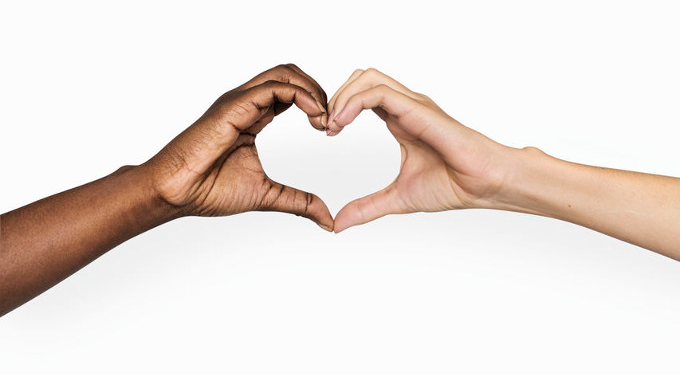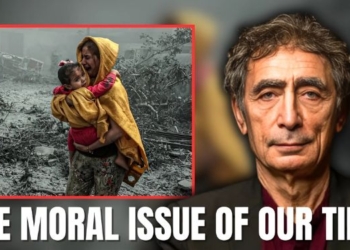
Much is being said about removing institutional racism from our society, but what do we need to do to remove it from individual hearts?
Noted sociologist Samuel Oliner, who himself was saved from a Nazi pogrom and hidden by a Christian family for two years, is one of those with an answer. He has made it his life’s work to study people who stand up for others who are not like them, even at personal risk.
After moving to America and becoming a noted sociologist, Oliner interviewed 1074 heroes — other Christians who hid Jews from the Nazis, firemen who ran up the Twin Towers — in an attempt to pinpoint the qualities most essential in the altruistic personality.
Although humans are innately generous and selfless, as he has discovered, whether or not we display these qualities has a good deal to do with how we have been brought up to view the world.
A strong social contract
The ability to put ourselves in another’s shoes is most developed in children who grow up with what Oliner and others refer to as the “altruistic perspective”: a strong sense of the social contract. They are encouraged to become members of a community and follow its strict social code: to fulfill their shared roles of obligation, sustain a good reputation, uphold friendship, and avoid social disapproval.
The altruists also are able to view society as all-inclusive – and to move beyond even large differences like ethnicity or religion.
Whether a non-Jew helping the Jews in Europe during World War II or a fireman rushing up one of the towers during the 9/11 attacks, the rescuers in Oliner’s study often talked of ethical and moral obligations to all humanity.
Rescuers felt particularly empathetic toward others’ pain and tended to observe others in terms of their mutual similarities, regardless of religious, ethnic, economic, or sexual differences. The altruists also cultivated friends among diverse groups. They were able to see the big picture – beyond similarity or difference between people — to the common Bond.
Bystanders or those who deliberately hurt others, in Oliner’s studies, have had an upbringing that reinforced, on some sort of scale, the opposite impulse: selfishness, prejudice, racism, and dishonesty.
In most instances, they did not have a close family life; as children, many had been ignored, deprived of love, or abused in some way. Selfishness was the natural result of a pathological — or at least a defective — upbringing: excessive individuation.
Harvard University researchers Nancy Briton and Jennifer Leaning conducted thousands of hours of interviews with people in 12 of the most conflict-ridden places on earth, including Bosnia, Afghanistan, and Cambodia.
They discovered that these kinds of upstanders had four primary virtues setting them apart, but most important was a sense of common ground with people who were different. They managed to find, in Briton’s words, a “thread of similarity” with others, no matter how slight.
Walking a mile in your shoes
Most biologists argue that doing for others is usually carried out ultimately for selfish ends.
According to this mindset, we do nice things, basically, out of guilt, or a fear of reprisal from our friends. Evolutionary biologist Michael Ghiselin put it more unsentimentally: “Scratch an altruist and watch a hypocrite bleed.”
Daniel Batson, a psychologist at the University of Kansas, who holds twin doctorates in theology and psychology, has run a number of experiments whose purpose is to look into the human heart to find out exactly why we do selfless things for other people.
Through some 25 studies, he has shown that altruism isn’t sparked by social concerns, such as guilt, sadness, or shame. Rather, it is evidence of what he calls “the empathy-altruism hypothesis”: people will help if they can put themselves in someone else’s shoes.
In one study, Batson made use of functional MRI to study the activity in the brains of people who were observing video clips of patients undergoing painful medical procedures.
When the observers projected themselves into the situation and imagined undergoing the procedure themselves, they increased their own distress and activated those areas of the brain that are associated with pain.
But when they were able to focus their feelings on the inner state of the patient and his likely feelings, their own distress levels fell and their empathetic concern for the patient rose.
Batson had similar results when he asked his study participants to take one of three perspectives when listening to a narrative about the difficult personal circumstances of “Katie”, a young college student who had recently lost both parents.
Those imagining themselves in the situation increased their own personal stress and blocked their ability to help.
But those who were most effective and scored higher were able to step outside their own emotion and focus instead on Katie’s likely feelings.
Batson’s work suggests something important about the nature of connecting across racial divides. We act on our natural compassion when we can move beyond the sense of self and take the other’s perspective.
When people can genuinely feel another person’s pain, rather than imagining their own pain in the same circumstance, they are prompted to act altruistically.
His work suggests that altruism requires an ability to completely move out of your own state of mind and into someone else’s.
Batson refers to this impulse as empathy, but Robert Cialdini, a former psychologist at the University of Arizona and author of Influence: The Psychology of Persuasion, offers a more all-embracing explanation.
We can help when we have lost our sense of individuality and step temporarily into a space of oneness.
Healing our society of racism will be the natural extension of what happens when each of us can move out of our small sense of ourselves and our own individuality and into space between.
















